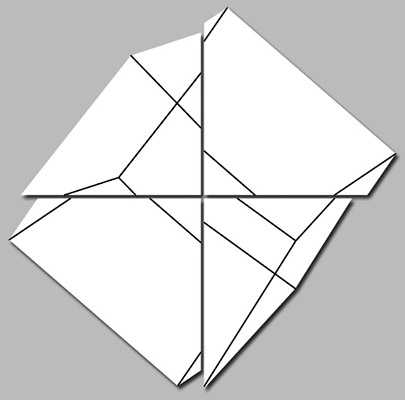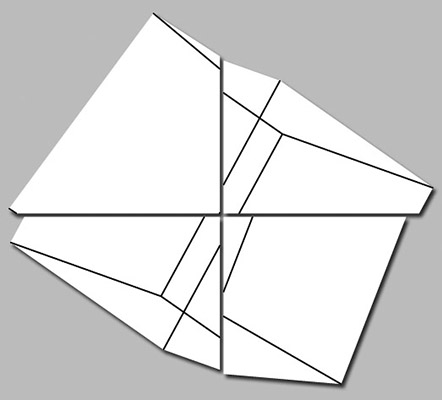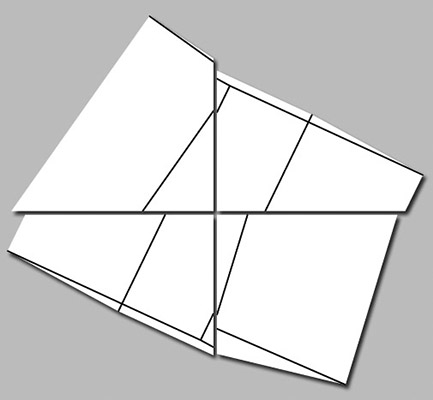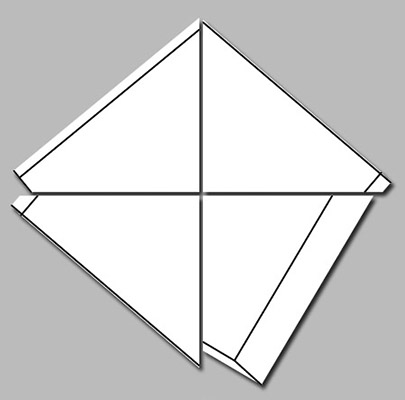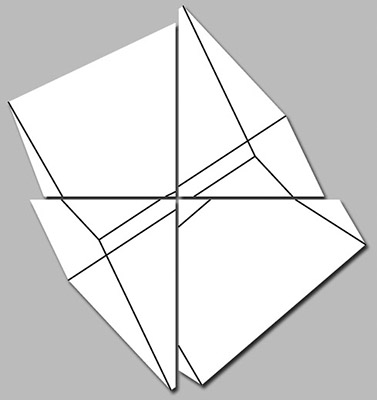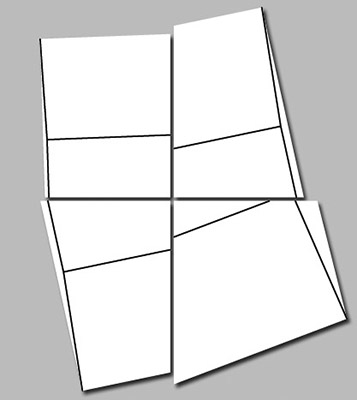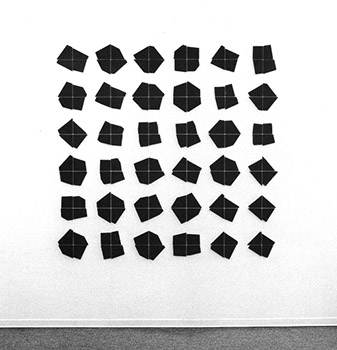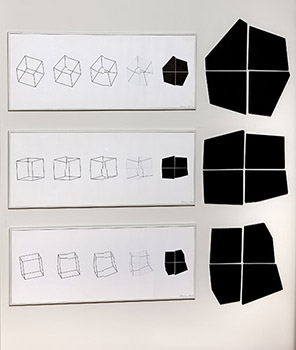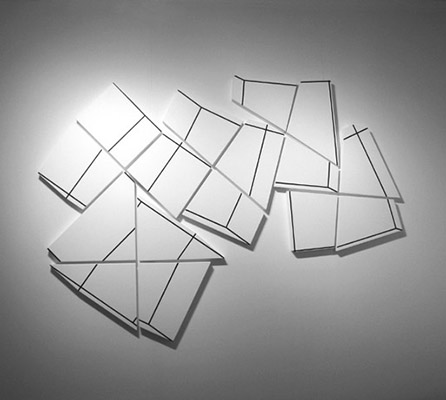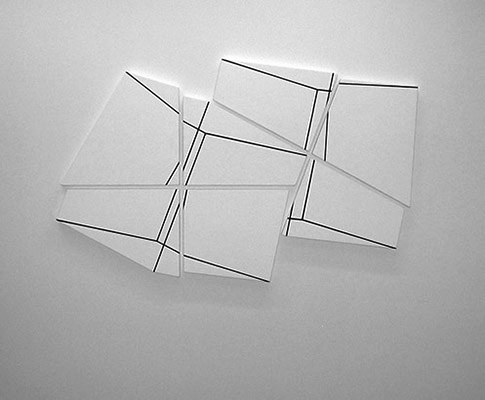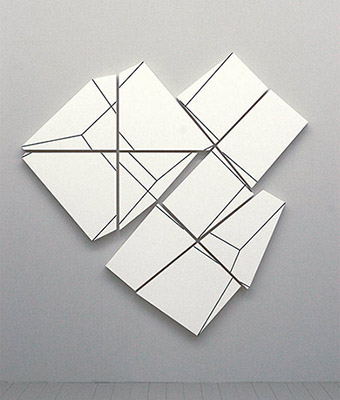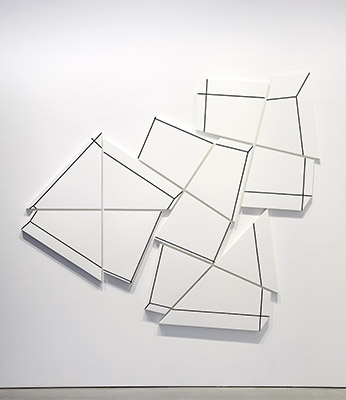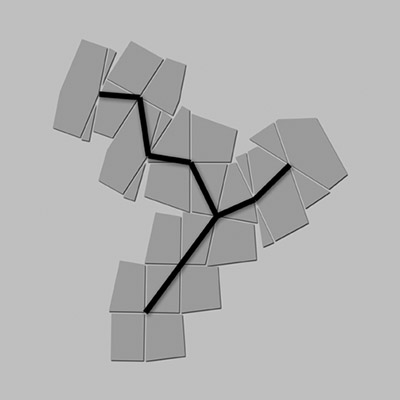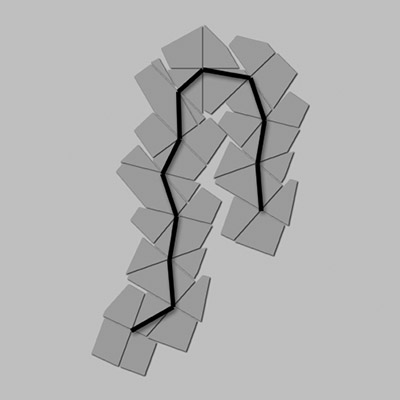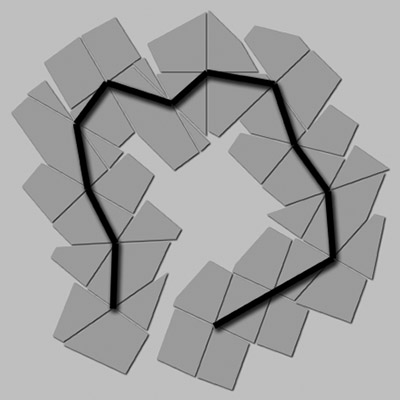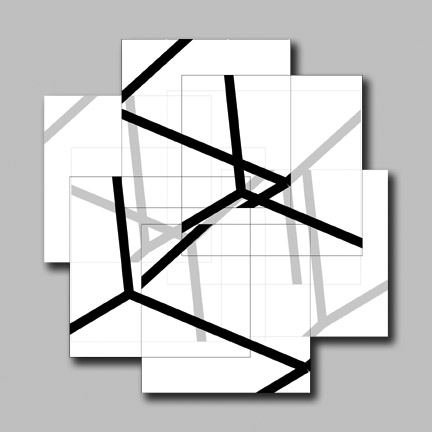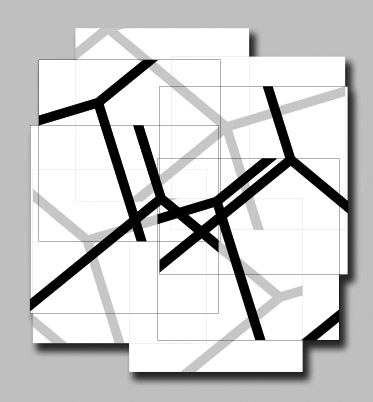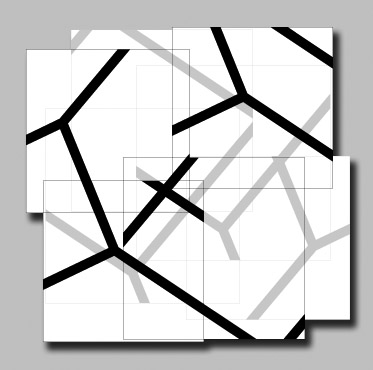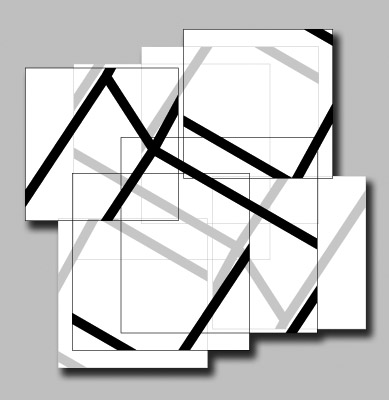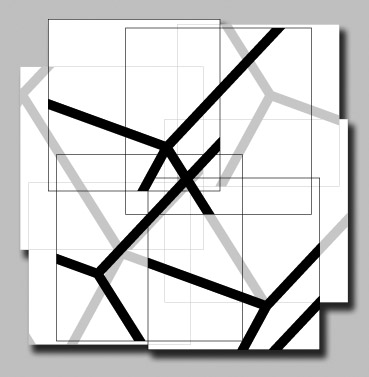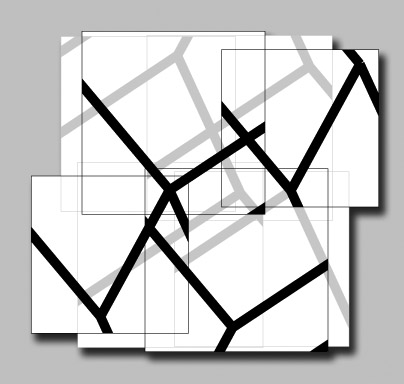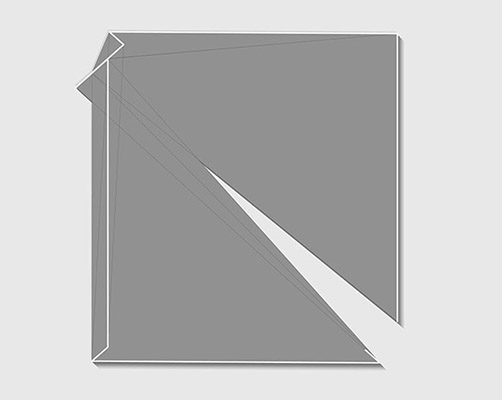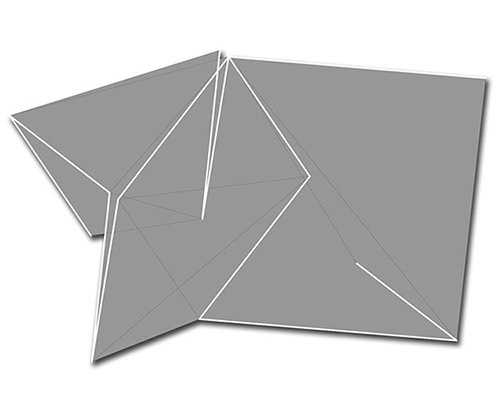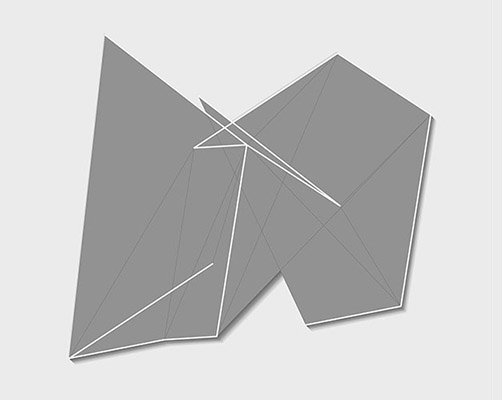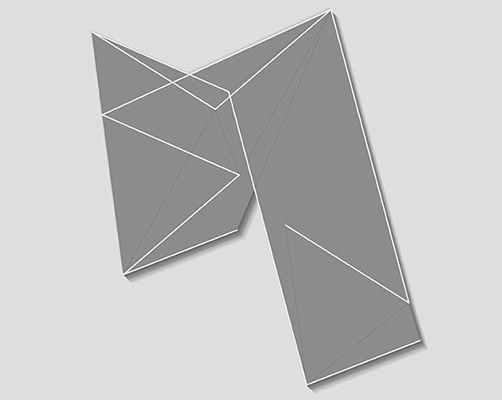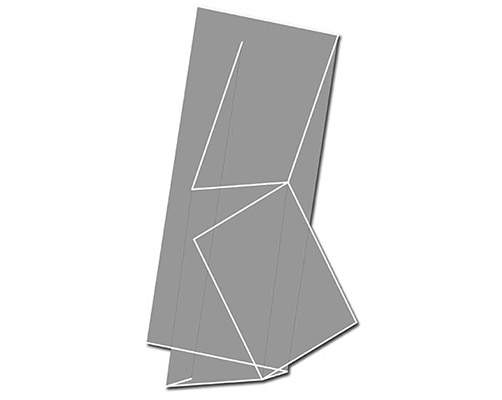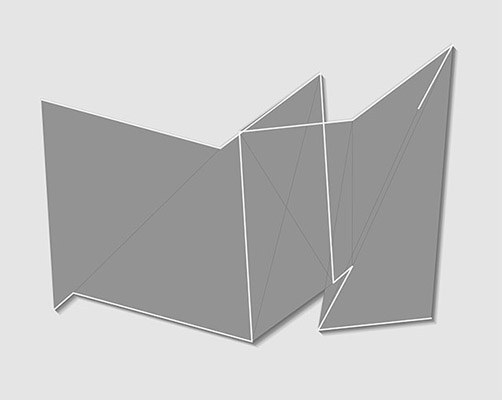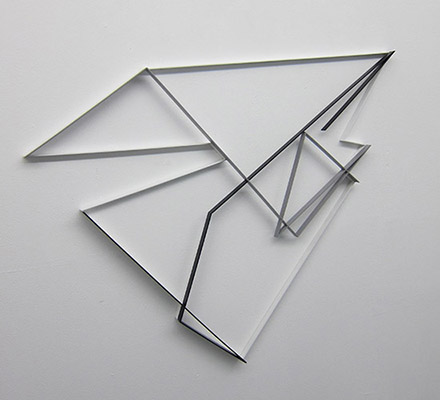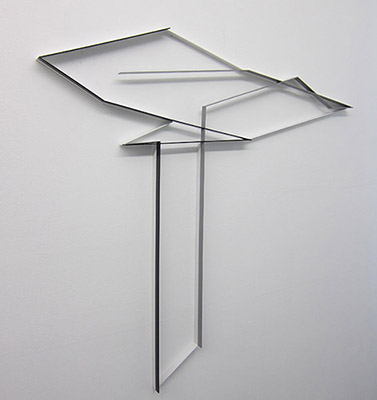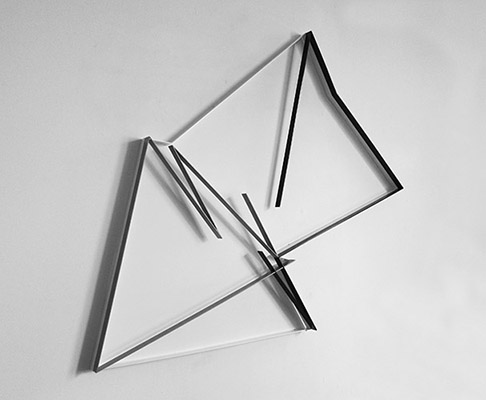Divisibility I, II, III 1980 - 1986Divisibility I, 1980 - 1984, cartesian cuts and 3-D rotations create "4-cuts", 4-part shaped canvases and wooden reliefs. A 3-D cube is cut into 4 parts by the x and y cartesian axes. Each part is rotated seperately in 3-D and projected into 2-D, forming a "4-cut". In order to visually stabilize the structure, two diagonally opposed quadrants (top right and bottom left) contain the same rotation. The "out-lines" of each section form the shape and the remaining "in-lines" create the signs. Works from this workphase are published in the catalog: "Manfred Mohr Divisibility, Generative Works, Part I, Works from 1980-1981", Montreal 1981 Webpage about Divisibility I
Divisibility II, 1984/1994, molecular-like growths are created with a "4-cut" as its seed. A molecular-like growth is created with the "4-cut" as its seed. Growth results from algorithms of graph patterns deciding which "out-lines" of the quadrants created in the preceding generation is used to produce the "4-cut" of the next generation. Works from this workphase are published in the catalog: Manfred Mohr Divisibility II, Generative Arbeiten, Part II, Works from 1981-1984, Cologne 1985 Webpage about Divisibility II
Works from this algorithm in public collections: Grazyna Kulczyk Collection, Poznan Poland; Carl & Marilyn Thoma Art Foundation, Chicago, Illinois & Santa Fe, New Mexico USA Divisibility III, 1986, "out-lines" of growth from Divisibility II is overlaid with its growth-line The contours of the "4-cut" is seen as a "shadow-form", a two dimensional visual history of the cube-growth. The connecting path between the center point of one "4-cut" and the center point of the next "4-cut" is shown as a black line, the growth-line. Similar to the spine in a body, the growth-line is embedded in the shadow-form. "4-cuts" are in gray cardboard and overlaid growth-line is in black wood. Works from this workphase are published in the catalog: Manfred Mohr Divisibility III, Generative Works, Part III, Works from 1985-1986, Stuttgart 1986 Webpage about Divisibility III
| ||||||||||||||||||||||||||
Dimensions II 1986 - 19894-D hypercube rotated in 4-D space creates shape and signs in 2-D
Webpage about Dimensions II
| |||||||||||
Works from this algorithm in public collections: Kunstmuseum Stuttgart, Stuttgart Germany; Wilhelm-Hack-Museum, Ludwigshafen Germany; Musée d'Art Moderne et Contemporain, MAMCS, Strasbourg France | |||||||||||
Half Planes 1995-1997Shaped structures are created from two diagonal-paths of a 6-D hypercube rotated in 6-D and projected into 2-DWorks from this workphase are published in the exhibition catalog: Manfred Mohr, "Algorithmic Works", Josef Albers Museum, Bottrop 1998 Webpage about Half Planes P-511: The two-diagonal-paths together with vectors connecting their corresponding vertices create the shaped canvases and the contents, 1995-1996 Acrylic/Canvas/Wood: - out-lines, shaped canvas painted gray, - in-lines, 2 diagonal-paths (white lines), connections between corresponding vertices (thin black lines)
Work from this algorithm in public collection: Museum Pfalzgalerie, Kaiserslautern Germany P-522: Steel structures with 3 overlaying parts, 1997: - out-lines, underneath, painted white - in-lines, on top, the 2 diagonal-paths, one painted gray, the other painted black
| ||||||||||
© 2020 by Manfred Mohr
